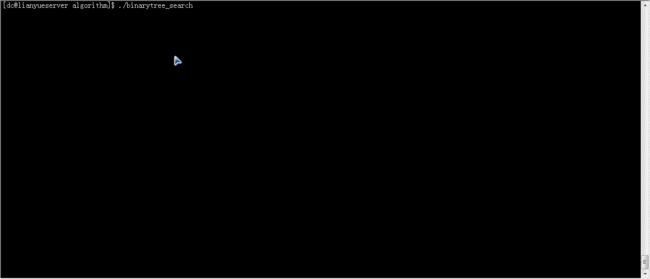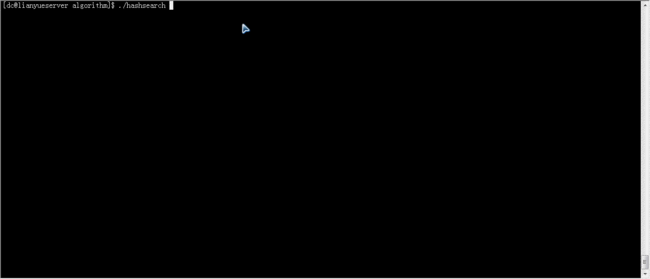MMORPG大型游戏设计与开发(服务器 游戏场景 搜索机)
双十一注定是忙碌的日子,所以到了现在我才将今天自己学习的内容拿出来跟大家分享。搜索机是我自己暂时取的名字,其实简单的说就是场景里提供搜索的一个工具,负责场景对象的范围搜索和获取。空洞的理论总是让人一头雾水,如果玩过游戏的朋友不妨想一想查看附近的玩家、选择附近的玩家、点击任务怪物名称就可以自动寻路打怪这些功能就大致有个印象了。
一张截图
搜索机
1、数据
1. 状态
typedef enum operator_status_enum { kOperatorStatusContinue, //扫描继续 kOperatorStatusBreak, //中断本次扫描,并进入下一次扫描 kOperatorStatusStop, //停止扫描 } operator_status_t; //扫描状态
2. 基础
typedef operator_base_struct { scene::Base *scene; //场景指针 int32_t zoneid; //区域ID int32_t zoneradius; //搜索半径 bool scanhuman; //是否搜索玩家的列表 } operator_base_t; //基础操作扫描数据结构
2、实现
该实现为通用的父类接口,具体的类型搜索在子类中实现。
1. 初始化(init)
初始化扫描控制器,主要是初始化基础数据。
2. 操作前回调(on before)
回调需要在扫描之前的数据处理。
3. 判断区域是否需要扫描(is need scan)
根据区域ID判断是否需要扫描,如果不需要则不必再扫描。
4. 找到对象后的回调(on find object)
找到了一个对象的返回值,判断是否需要继续扫描。
5. 操作后的回调(on after)
扫描完成后的逻辑数据处理。
3、种类
1. 附近活跃的队友
typedef struct operator_active_teammates_strcut : public operator_base_struct { world_position_t position; //位置信息 int16_t teamid; //队伍ID uint32_t member_guid; //成员ID float radius; //搜索半径 } operator_active_teammates_t; //活跃队友的数据结构
2. 面积有效状态
进入有效范围则对象会获得该状态。
typedef struct operator_AEimpact_struct : public operator_base_struct { object::list_t *targets; //对象列表指针 float radius; //搜索半径 int32_t count; //数量 owner_impact impact; //拥有的特殊状态 impact_logic_t const *logic; //状态逻辑对象指针 object::Character *self; //自己的对象指针 world_position_t center_point; //中心点位置 } operator_AEimpact_t; //面积有效状态的数据结构
3. 面积有效技能
进入该技能左右范围后对象会获得该技能的效果。
typedef struct operator_AEskill_struct : public operator_base_struct { object::list_t *targets; //对象列表指针 float radius; //搜索半径 skillinfo_t const *skillinfo; //技能信息对象指针 object::Character *self; //自己的对象指针 world_position_t center_point; //中心点位置 } operator_AEimpact_t; //面积有效技能的数据结构
4. 合符聊天要求的对象
typedef struct operator_chat_struct : public operator_base_struct { packet::Base *packet; //网络包指针 int8_t chattype; //聊天的类型 int16_t guildid; //帮会ID //其他数据... } operator_chat_t; //聊天对象的数据结构
5. 附近的敌人
比如任务中自动打怪的搜索。
typedef struct operator_enemy_struct : public operator_base_struct { object::Monster *monster; //怪物指针 float radius; //搜索半径 } operator_enemy_t; //敌人对象的数据结构
6. 扇形扫描技能有效范围
进入扇形区域有效的范围将被该技能作用。
typedef struct operator_sector_skill_struct : public operator_base_struct { object::list_t *targets; //对象列表指针 float radius; //搜索半径 int32_t count; //最大可以搜索的对象数量 skillinfo_t const *skillinfo; //搜索主体的技能信息对象指针 object::Character *self; //自己的对象指针 world_position_t center_point; //中心点位置 } operator_sector_skill_t; //以扇形区域搜索技能范围的结构
7. 附近的队友
查询附近的队友信息。
typedef struct operator_teammates_struct : public operator_base_struct { object::Monster *monster; //怪物对象指针 float radius; //搜索半径 int32_t count; //最大可以搜索的对象数量 int8_t type; //类型 bool only_noenemy; //是否只搜索没有敌人的队员 bool scan_allmonster; //是否扫描所有敌人 } operator_teammates_t; //队伍搜索结构
8. 附近的玩家
查看附近的玩家列表(名称、状态、等级等)。
typedef struct operator_character_struct : public operator_base_struct { object::list_t *targets; //对象列表指针 float radius; //搜索半径 int32_t count; //最大可以搜索的对象数量 object::Special *self; //搜索主体 world_position_t center_point; //中心点位置 } operator_character_t; //特殊对象玩家搜索结构
9. 附近的陷阱
如果附近有陷阱,则对象在陷阱有效范围里将被陷阱作用。
typedef struct operator_trap_struct : public operator_base_struct { object::list_t *targets; //对象列表指针 float radius; //搜索半径 int32_t count; //最大可以搜索的对象数量 object::Special *self; //搜索主体 world_position_t center_point; //中心点位置 } operator_trap_t; //特殊对象搜索陷阱的结构
算法(树查找和哈希查找)
1、基于二叉排序树的查找
叉排序树定义性质:
1 如果二叉树的左子树不为空,则左子树上的每一个节点的元素值都小于其对应的根节点元素的值。
2 如果二叉树的右子树不为空,则右子树上的每一个节点的元素值都大于其对应的根节点元素的值。
3 时二叉树的左子树和右子树同时满足1、2两项特性,即左子树和右子树都是一棵二叉树。
基于二叉排序树的查找算法分为插入操作和查找操作的两个部分。
插入操作不需要移动节点,仅需要移动节点指针。
code.
#include <stdio.h> #include <stdint.h> #include <inttypes.h> #include <malloc.h> /** * 二叉排序树定义性质: * 1 如果二叉树的左子树不为空,则左子树上的每一个节点的元素值都小于其对应的根节点元素的值。 * 2 如果二叉树的右子树不为空,则右子树上的每一个节点的元素值都大于其对应的根节点元素的值。 * 3 同时二叉树的左子树和右子树同时满足1、2两项特性,即左子树和右子树都是一棵二叉树。 */ /** * 基于二叉排序树的查找算法分为插入操作和查找操作的两个部分。 * 插入操作不需要移动节点,仅需要移动节点指针。 */ typedef struct node_struct { int32_t data; struct node_struct *left, *right; } node_t, *nodepointer_t; //二叉树的查找的结构 //二叉树查找 nodepointer_t binarytree_search(nodepointer_t tree, int32_t x); //二叉树插入。如果树中不存在元素x,则将x插入到正确的位置并返回1,否则返回0 int32_t binarytree_insert(nodepointer_t *trees, int32_t x); //中序遍历二叉排序树 void in_ordertraverse(nodepointer_t tree); int32_t main(int32_t argc, char *argv[]) { nodepointer_t tree = NULL, pointer; int32_t table[] = {32, 13, 23, 56, 53, 67, 65, 88, 25, 36}; int32_t length = sizeof(table) / sizeof(table[0]); int32_t x, i; //插入并生成二叉排序树 for (i = 0; i < length; ++i) binarytree_insert(&tree, table[i]); printf("in order traverse list is: \n"); in_ordertraverse(tree); printf("\nplease input a number you want search: "); scanf("%d", &x); pointer = binarytree_search(tree, x); if (pointer != NULL) { printf("%d is a member of array\n", x); } else { printf("%d is not a member of array\n", x); } return 0; } nodepointer_t binarytree_search(nodepointer_t tree, int32_t x) { node_t *pointer = NULL; if (tree != NULL) { pointer = tree; while (pointer != NULL) { if (pointer->data == x) { //如果找到,则返回指向该节点的指针 return pointer; } else if (x < pointer->data) { //如果关键字小于pointer指向的节点的值,则在左子树中查找 pointer = pointer->left; } else if (x > pointer->data) { //如果关键字大于pointer指向的节点的值,则在右子树中查找 pointer = pointer->right; } } } return NULL; } int32_t binarytree_insert(nodepointer_t *trees, int32_t x) { node_t *pointer = NULL, *current = NULL, *parent = NULL; current = *trees; while (current != NULL) { if (current->data == x) //如果二叉树中存在元素为x的节点,则返回0 return 0; parent = current; //parent指向current的前驱节点 if (x < current->data) { //如果关键字小于pointer指向节点的值,则在左子树中查找 current = current->left; } else { //如果关键字大于pointer指向节点的值,则在右子树中查找 current = current->right; } } pointer = (node_t *)malloc(sizeof(node_t)); //生成节点 if (NULL == pointer) return 0; //内存不足 pointer->data = x; pointer->left = NULL; pointer->right = NULL; if (!parent) { //如果二叉树为空,则第一节点成为根节点 *trees = pointer; } else if (x < parent->data) { //如果x小于parent指向的节点元素,则x成为parent的左节点数据 parent->left = pointer; } else { //如果x大于parent所指向的节点元素,则x成为parent的右节点数据 parent->right = pointer; } return 1; } void in_ordertraverse(nodepointer_t tree) { if (tree) { in_ordertraverse(tree->left); //中序遍历左子树 printf("%4d", tree->data); //访问根节点 in_ordertraverse(tree->right); //中序遍历右子树 } }
result.
2、哈希查找
哈希表的查找方法与前面的基于线性和树形的查找算法不同,哈希表直接定位了元素所在位置,基本不需要逐个比较元素(除了冲突)。
该算法需要解决的两个问题:构造哈希表和处理冲突。
最常用的构造哈希表的方法是除留余数法,最为常用的处理冲突的方法是开放定址法和链地址法。
code.
#include <stdio.h> #include <stdint.h> #include <inttypes.h> #include <malloc.h> #include <stdlib.h> /** * 哈希表的查找方法与前面的基于线性和树形的查找算法不同,哈希表直接定位了元素所在 * 的位置,基本不需要逐个比较元素(除了冲突)。 * 该算法需要解决的两个问题:构造哈希表和处理冲突。 * 最常用的构造哈希表的方法是除留余数法,最为常用的处理冲突的方法是开放定址法和链地址法。 */ typedef struct datatype_struct { int32_t value; //元素值 int32_t repeatcount; //重复次数 } datatype_t; //元素类型结构 typedef struct hashtable_struct { datatype_t *data; int32_t length; //长度 int32_t number; //个数 } hashtable_t; //哈希表的结构 //构造哈希表并处理冲突 void create_hashtable(hashtable_t *hashtable, int32_t m, int32_t p, int32_t hash[], int32_t length); //在哈希表中查找值为x的元素 int32_t hash_search(hashtable_t hashtable, int32_t x); //求哈希表的平均查找长度 void hashASL(hashtable_t hashtable, int32_t m); //哈希表打印 void displayhash(hashtable_t hashtable, int32_t m); //数组打印 void displayarray(int32_t array[], int32_t length); int32_t main(int32_t argc, char *argv[]) { int32_t hash[] = {45, 35, 23, 17, 83, 27, 91, 33, 56, 78, 99}; hashtable_t hashtable; int32_t m = 11, p = 11; int32_t length = sizeof(hash) / sizeof(hash[0]); int32_t position, x; create_hashtable(&hashtable, m, p, hash, length); displayhash(hashtable, m); printf("please a number you want search: "); scanf("%d", &x); position = hash_search(hashtable, x); printf("%d in array position: %d\n", x, position); hashASL(hashtable, m); return 0; } void create_hashtable(hashtable_t *hashtable, int32_t m, int32_t p, int32_t hash[], int32_t length) { int32_t i, k = 1; int32_t sum, addr, di; (*hashtable).data = (datatype_t *)malloc(m * sizeof(datatype_t)); if (NULL == (*hashtable).data) return; //not enough memory (*hashtable).number = length; //元素个数 (*hashtable).length = m; //哈希表长度 for (i = 0; i < m; ++i) { //哈希表初始化 (*hashtable).data[i].value = -1; (*hashtable).data[i].repeatcount = 0; } for (i = 0; i < length; ++i) { //构造哈希表并初始化 sum = 0; //sum 记录冲突次数 addr = hash[i] % p; //利用除留余数法求哈希函数地址 di = addr; //如果不冲突则将元素存储在表中 if (-1 == (*hashtable).data[addr].value) { (*hashtable).data[addr].value = hash[i]; (*hashtable).data[addr].repeatcount = 1; } else { //用线性探测再散列法处理冲突 do { di = (di + k) % m; sum += 1; } while ((*hashtable).data[di].value != -1); (*hashtable).data[di].value = hash[i]; (*hashtable).data[di].repeatcount = sum + 1; } } } int32_t hash_search(hashtable_t hashtable, int32_t x) { int32_t d, d1, m; m = hashtable.length; d = d1 = x % m; while (hashtable.data[d].value != -1) { if (hashtable.data[d].value == x) { //如果找到x,则返回其所在位置 return d; } else { //如果没有找到,则继续向后查找 d = (d + 1) % m; } //如果已经遍历完所有位置还是没有找到,则返回0 if (d == d1) return 0; } return 0; } void hashASL(hashtable_t hashtable, int32_t m) { float avg = 0; int32_t i; for (i = 0; i < m; ++i) avg = avg + hashtable.data[i].repeatcount; avg = avg / hashtable.number; printf("avg search length ASL: %2.f", avg); printf("\n"); } void displayhash(hashtable_t hashtable, int32_t m) { int32_t i; printf("hash table address: "); for (i = 0; i < m; ++i) //输出哈希表的地址 printf("%-5d", i); printf("\n"); printf("member value: "); for (i = 0; i < m; ++i) //输出哈希表的元素值 printf("%-5d", hashtable.data[i].value); printf("\n"); printf("repeat times: "); for (i = 0; i < m; ++i) //冲突次数 printf("%-5d", hashtable.data[i].repeatcount); printf("\n"); } void displayarray(int32_t array[], int32_t length) { int32_t i; for (i = 0; i < length; ++i) printf("%4d", array[i]); printf("\n"); }


